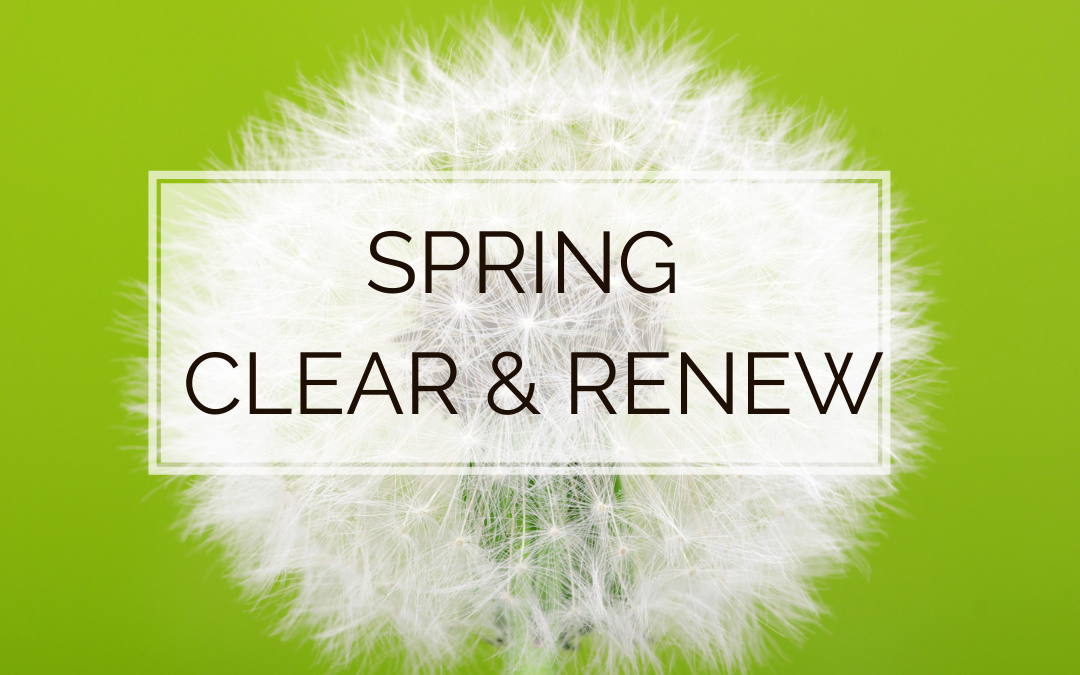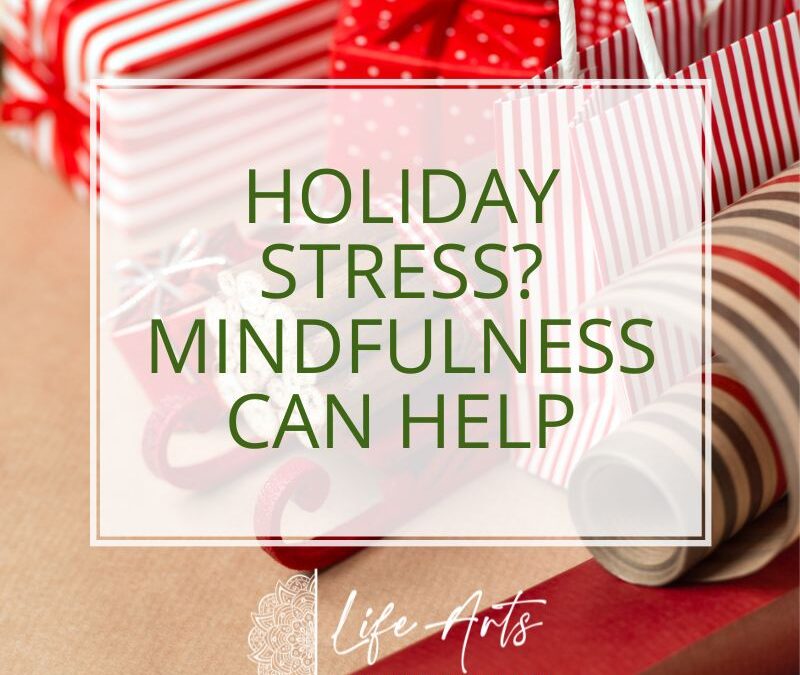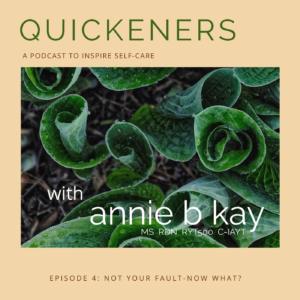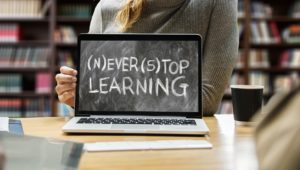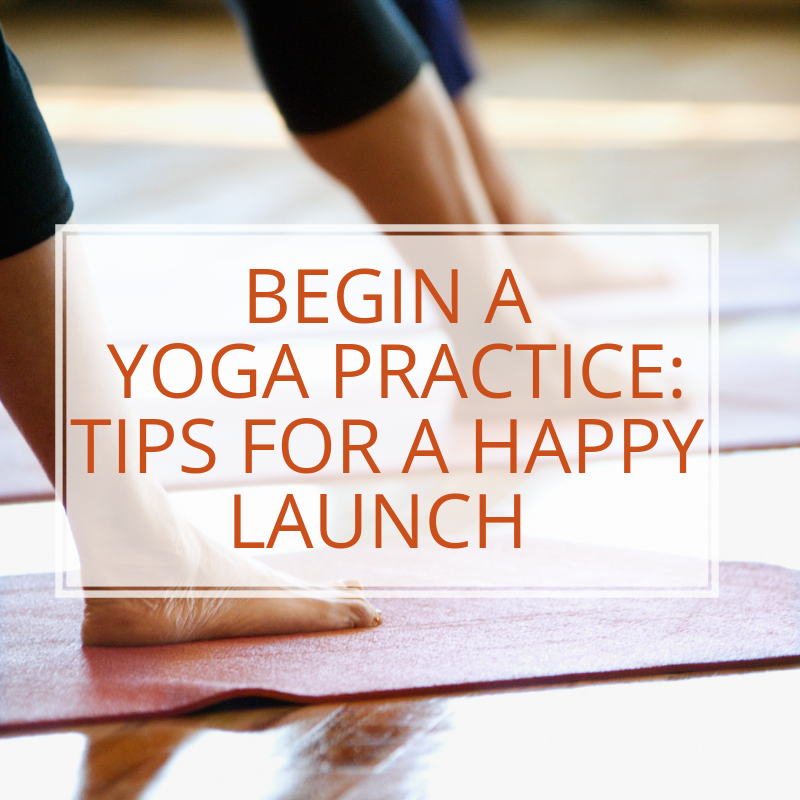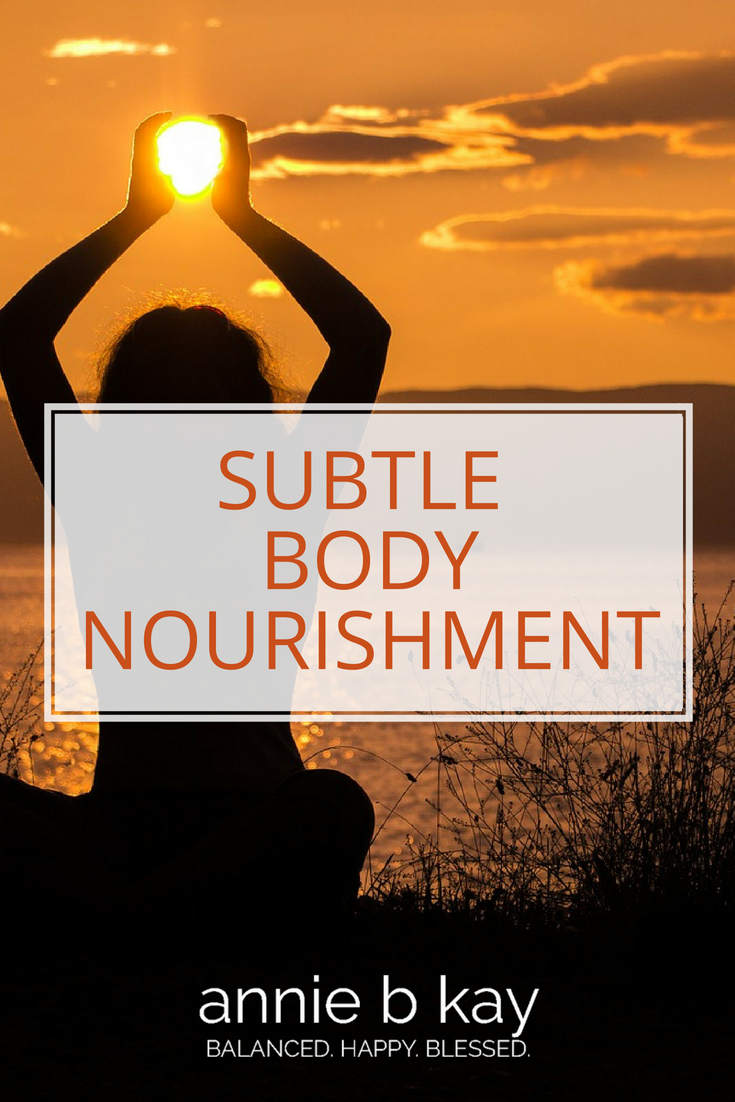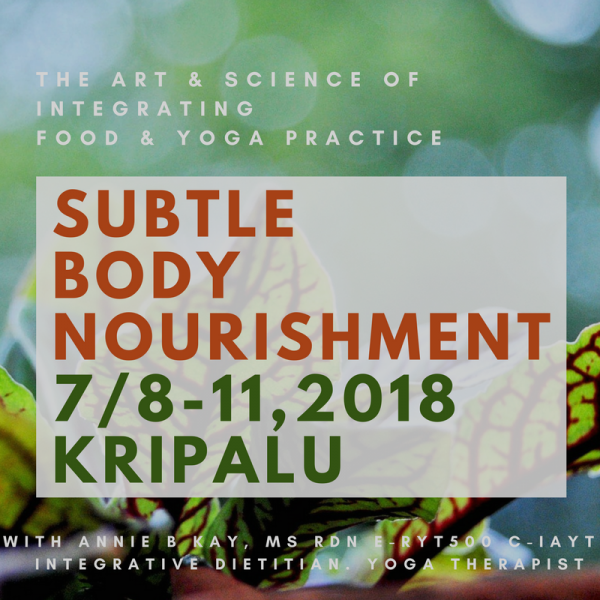Updated 11/9/2023
Here it comes – the wave of winter holidays.
Time seems to speed up now, and the season can seem a bit sugar-coated and a bit stressful. Suddenly so much to do! Decorating, attending gatherings, figuring out if you should send cards or get gifts for the people in your life, and dealing with extended family can be overwhelming. If you have a business – double the decisions!
It doesn’t have to be quite so stressful. Holiday cheer doesn’t require weight gain (here’s a study from the National Weight Control Registry (1) about what works). Mindfulness can help you enjoy the holidays a little more, and stress a little less.
If you find yourself feeling holiday-rattled and you’re not basking in a glowing sense of cheer, the practices of mindfulness might help you take a break from expectations and reconnect with the reason for the season.
Can Mindfulness Really Help?
The short answer is yes. Practicing mindfulness – both the meditation practice and taking a more mindful attitude toward the activities of the holiday – can help. Mindfulness can provide that little shift in attitude that can be the difference between feeling overwhelmed and feeling excited about the holiday.
Mindfulness practice and attitudes can help you become more aware of your own needs as you move through the season of giving. It can make you more aware of your choices and give you space to choose in a more thoughtful way. Mindfulness can also help you to be a little easier on yourself for being human should you not create holiday perfection or if you over-indulge.
How does Mindfulness Manage Stress?
A mindfulness practice can help you step away from the fire, mentally and emotionally, and practice the power of pause – of taking a breath when things get overheated or overwhelming. When we get triggered by an unkind or unintended nastiness, or feel that we are not up to the job of holiday bliss, pausing for a breath tends to help us take a step back and see things in a little less pressured light. Then, we can respond in a wiser, kinder way. This takes practice, my friends, but it is interesting how quickly the attitudes around mindfulness – kindness, compassion – can make life better and ease the tension of the holidays.
With a mindful attitude, we become more aware of the results of our choices – how our choices impact how we feel, and how our lives unfold. Eventually (with practice, self-compassion and awareness) the practice of mindfulness can be a framework within which we begin to choose to feel a bit better, then make the choices that will create that result.
As it happens, this particular time of year is excellent for cultivating quietness and a meditative mindset. It may be one reason that we can feel so overwhelmed with our over-commercialized holiday – that this season is, naturally, a time of slowing down and turning inward. The winter solstice is akin to the end of the exhale for the earth – a time of dark and quiet and reflection before the next year begins. In the Celtic wheel of the year, this is a time when the veil between worlds is thin – when you can “see” or imagine your way into your future, and “see” and appreciate your past. It is a great time of the year for honoring and integrating what has unfolded for you, and for visioning what may come. Mindfulness practice can help with that.
So, What is Mindfulness?
Mindfulness is a meditation practice, and it is also the attitudes and mindsets that a meditation practice encompasses. In mindfulness, you:
- Adopt a meditative mindset. We humans have the capacity to change our consciousness from our everyday distracted state to a calm, clear relaxed and open one. With this change, you focus attention inward and relax.
- Pay attention to what is happening moment by moment. Mindfulness is meditation while…(whatever you are doing). So, you get curious about whatever you are doing – be it walking or eating. Slowing the process down so that you can get fascinated enough that you lose yourself – you lose track of time – is mindful meditative absorption.
- There is a particular attitude of mindfulness called non-judgmental awareness. As you practice, you become aware of judgments like comparisons (this food is healthy therefore good, that food is less healthy, therefore not so good, for example). In mindfulness, while eating, for example, you aim for a direct, sensory relationship with what you are eating. Cultivate an attitude of kindness – toward yourself and others.
How can I Practice Mindfulness this Holiday?
There are limitless ways to practice through this particular season.
Here are just few ideas:
Start or re-charge your morning meditation practice. If you are just beginning, start with just 5 or 10 minutes to sit in a quiet place, with music or not, and get quiet. You can focus your attention on your breathing – on the expansion of the inhale, and letting go of the exhale. Alternatively, you can focus on your thoughts – noticing your thoughts as they arise, label them “just thoughts” and let them float away.
Practice mindfulness meditation while eating.
Practicing mindful eating can help you explore your sensual relationship with food as well as your hunger and satiety (fullness) indicators. When I see people eat more of their bites as a mindfulness meditation practice, they begin to recognize that their eating patterns are tied more to external signals – things like getting home from a stressful day of work or seeing one of the endless food-porn ads on TV. Over time, the practice of mindful eating tends to help people tune in more deeply to their internal guidance system with regard to hunger, fullness and how much food is enough.
Here’s my post on how that can unfold.
Mindful Eating: The Practice of Eating Better
It’s difficult to practice mindful meditation while socializing – meditation just doesn’t work that way! But, you can be mindful of your breath, mindful of something kind you would like to say to someone or practice appreciation of your friends and family. With regard to food, can you simply practice what I call the power of pause – and take in the visual beauty of the holiday food?
Another practice you might play with this year is the mindful practices of kindness and of contentment. How might you be kind to yourself and others through this season? Is there something that you do, or way you are through the holidays, that doesn’t really serve you anymore?
In yoga contentment is a practice – one of my wise teachers used to say “Try less”. What a great motto for life!
Can we practice – intentionally – being content with things as they are right now – in their perfect imperfection.
References
- Olson, Kayloni et al, Strategies to manage weight during the holiday season among US adults: A descriptive study from the National Weight Control Registry. Obesity Science and Practice. 2021 Apr; 7(2): 232–238.



